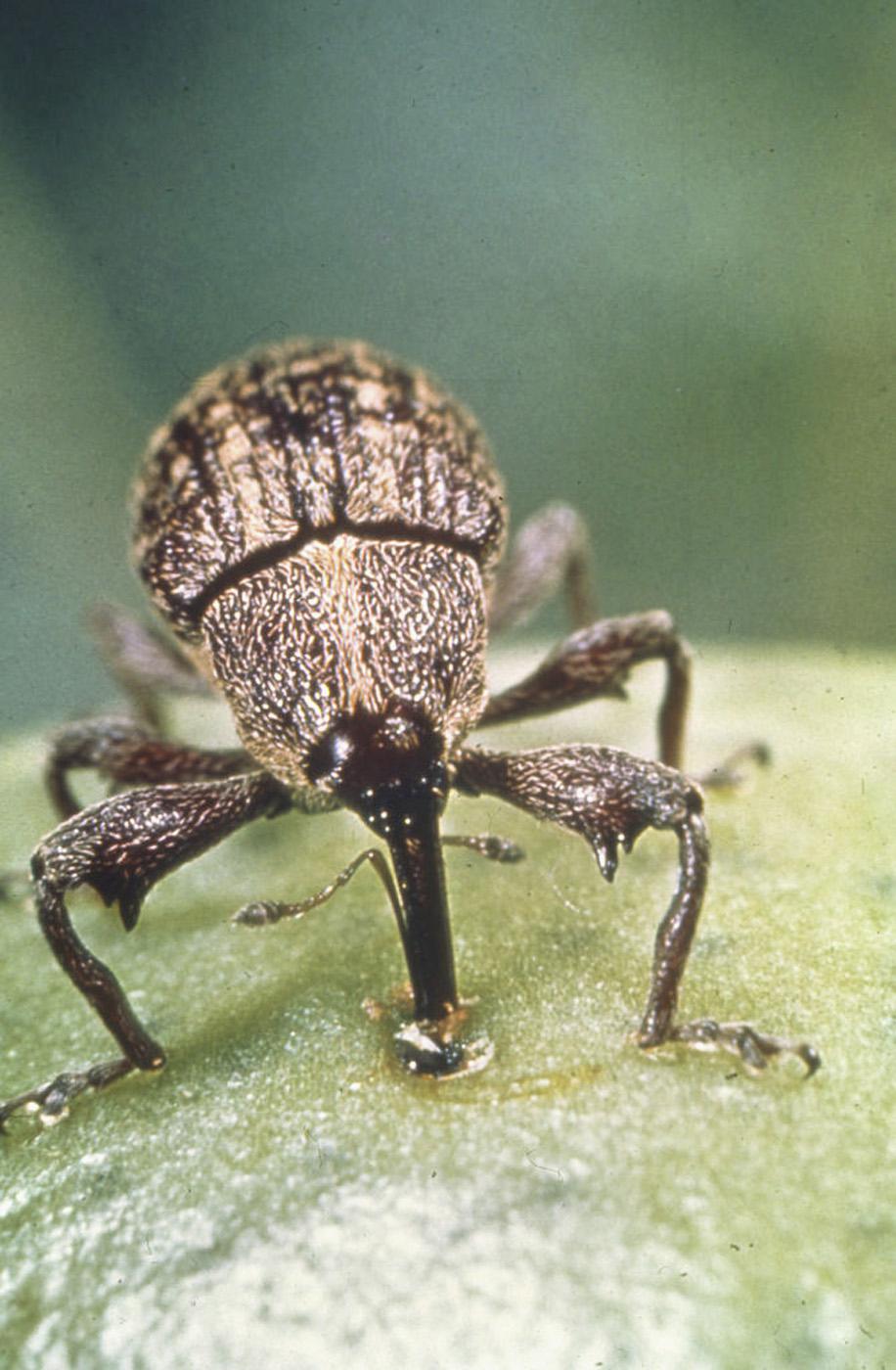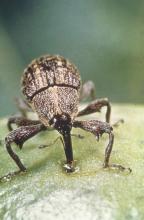Information Possibly Outdated
The information presented on this page was originally released on October 30, 2008. It may not be outdated, but please search our site for more current information. If you plan to quote or reference this information in a publication, please check with the Extension specialist or author before proceeding.
Boll weevils almost eradicated in state
MISSISSIPPI STATE -- A small insect pest that drove many cotton farmers nearly to desperation in its heyday is now in desperate straits of its own.
For most of the summer, the state's extensive trap network found only one boll weevil, which was in a Tunica County trap on June 11. Scouts added two more weevils to the 2008 collection in mid-October from traps in Chickasaw County.
“The weevil found in Tunica County was on Highway 61 by the turn to the casinos. The weevil gambled and lost,” said Jeannine Smith, executive director of the Mississippi Boll Weevil Management Corp. “The boll weevil's luck finally ran out.”
While it is easy to laugh about the Tunica boll weevil and the circumstances in which it was found, the insect has never been a joke in Mississippi and across the Cotton Belt.
Boll weevils entered the United States from Mexico, and they were first seen in Mississippi on Sept. 20, 1907. By 1915, they covered the entire state, and by 1920 they migrated to the East Coast. The boll weevil covered 600,000 square miles in 30 years.
David Bennett is a cotton farmer in Benton County. He and his father have been farming cotton in Mississippi for 60 years and remember what it was like when boll weevils were plentiful.
“They've been bad from the time I started farming until boll weevil eradication took over,” Bennett said. “We'd run the high sprayer seven days a week just trying to keep up, and we never did get rid of them.”
Bennett said they would spend $20 to $50 an acre spraying for the weevils. Farmers had to carefully keep track of the weevil's life cycle so they would know when to spray to keep the pests somewhat in check. Weevil numbers could increase from a few at the beginning of the week to more than could be counted by the end of the same week, he said.
“You could keep them from wiping you out, but you never could get rid of them,” he said. “It wasn't anything to walk out in a field and see 10 to 12 on a single bloom.”
Bennett said he doesn't think he could ever put a price tag on how much he and his father lost to boll weevils, but researchers estimate the boll weevil has cost U.S. cotton producers $13 billion since its arrival.
In 1960, the U.S. Department of Agriculture's Boll Weevil Research Laboratory was established at Mississippi State University to develop trapping, suppression and reproduction control techniques for this insect.
In 1977, a successful pilot boll weevil eradication project was conducted in South Mississippi, and it led the way for a full eradication program that began in North and South Carolina in 1983. The national eradication program moved from east to west, and states and regions could enter the program only after efforts were successful east of them.
When boll weevil eradication began in Mississippi, these pests numbered as many as several thousand per acre. The Mississippi Boll Weevil Management Corp. divided the state into five regions, designated 1A, 1B, 2, 3 and 4.
“Eradication efforts were implemented in stages, with Regions 3 and 4 beginning the fall of 1997,” Smith said. “Annual fees were assessed per acre and varied by region and by boll weevil numbers as the program continued through the years.”
When eradication efforts began, farmers were assessed as much as $24 per acre for program expenses. As a region's boll weevil numbers decreased, the annual per-acre fee assessment was lowered. In 2008, the highest assessment paid was $6.50 an acre in Region 3.
In years past, travelers in Mississippi's cotton-growing regions could hardly help but notice the green plastic traps perched on posts and scattered at measured intervals along roadsides and in fields. The Mississippi Boll Weevil Management Corp. used fees collected to hire scouts to count the number of boll weevils caught in these traps weekly.
This data was used to coordinate pesticide applications for maximum effect. The farmers' per-acre assessment also covered the cost of pesticide applications.
“We saw a reduction in the number of weevils the first year of the eradication program,” Smith said. “The last year Mississippi had a recorded yield loss to boll weevils was 2000.”
Once the technical advisory committee has determined that boll weevils have been eradicated in Mississippi, the state will enter a maintenance or surveillance period to prevent the area from being reinfested.
Darrin Dodds, cotton specialist with the Mississippi State University Extension Service, said after just a few years of battles, boll weevils are no longer an issue in cotton farming.
“Mississippi State had to name entomologist Richard Brown as the state boll weevil identifier because soon there will be cotton farmers who have never seen a boll weevil and won't even know what one looks like,” Dodds said.
If boll weevils were gamblers, they would know the time has passed to walk away; it's time to run.





